Raycus acquires Gauss, strong launch of ultra-fast lasers, competition is about to heat up
source:Laserfair
release:Nick
keywords: Raycus Ultrafast Lasers
Time:2019-06-01
Raycus acquires Gauss Lasers
On March 19th, Raycus announced that it intends to cooperate with Gauss Lasers Tech (Shanghai) on technology and products. The two parties are negotiating for Raycus Laser to acquire part of the equity interests of nine shareholders, including Zhou Shi'an and Hu Xueyuan, through their own or self-financing. However, the announcement did not specify the details and amount of the transaction.
It is understood that Gauss Lasers was founded by Zhou Shi'an. At the beginning of the company's establishment, it mainly developed nanosecond pulsed fiber lasers. However, due to fierce competition in this field, the company quickly turned to the development and production of picosecond and femtosecond lasers. Therefore, Gauss Lasers is an early enterprise engaged in the industrialization of ultrafast fiber lasers. In 2015, the magazine also had the opportunity to interview Mr. Zhou Shi'an, the general manager of the company, when the company was developing rapidly. However, in the past few years, the precision machining of ultra-fast lasers was due to the high cost of light sources, and the domestic process terminal applications were not popular. Therefore, the ultra-fast laser processing in the industrial market did not really increase the volume, and the Gauss Lasers was in a state of steady development.
The products developed by Gauss Lasers have found their way to the top three LED chip manufacturers and Apple foundries in the world, which is enough to demonstrate the competitiveness of their products. In the past, the ultra-fast laser market was monopolized by companies such as Coherence, Newport, and Trumpf. Domestic related companies were still in their infancy, but they have developed rapidly in the past two years. Raycus's development benefited from Yan Dapeng, Li Cheng, and Lu Kunzhong, three leading R&D leaders. They pioneered in pulsed fiber lasers and CW fiber lasers, making Raycus the domestic fiber laser leader. However, I have to admit that Raycus has not had much experience and advantages in this situation in the increasingly hot situation of ultrashort pulse lasers. Therefore, it is a faster way to acquire ultrashort pulse lasers through capital operation, which is in the interest of Raycus. This acquisition fills Raycus's gap in ultrafast laser technology. With years of accumulated customer channel advantages, the company is expected to quickly achieve import substitution of ultrafast lasers, and the growth space will be further consolidated.
According to the author, the industry has learned that this acquisition has been negotiated for more than two years. When the author saw Dr. Yan Dapeng, the founder of Raycus, asked about this matter, Dr. Yan answered that because the company is a listed company, he euphemistically refused to disclose the details of the acquisition.
Raycus’s New Ultrafast Lasers Released in Shanghai
In the recent World of Photonics China, Raycus Laser and Gauss jointly designed three ultra-fast lasers with broad market applications. They are 100W infrared picosecond laser, 20W ultraviolet picosecond laser and 20W infrared femtosecond laser, which are mainly used in 3C industry, 5G and OLED and medical and precision materials micromachining.
1. Infrared picosecond laser

It has a high average power of 100W, a maximum single pulse energy of 200μJ, a maximum pulse train energy of 1000μJ (Burst), and an adjustable repetition frequency range of 1Hz to 1000kHz. Mainly used in the cutting of glass and ceramic brittle materials. The laser adopts self-developed seed source, solid amplification technology and water cooling. Support Burst mode output, support PSO control.
2. Infrared femtosecond laser

Infrared 20W femtosecond laser, center wavelength: 1027-1040nm, pulse width <400fs, maximum single pulse energy 100μJ, average power 20W, adjustable repetition frequency range 1Hz-1000KHz or higher. Mainly used in transparent materials, film materials, fiber materials, stainless steel metal materials cutting and drilling, and medical applications. The product uses self-developed seed source, fiber technology, air-cooled, supports Burst mode output, and supports PSO control.
3. ultraviolet picosecond laser
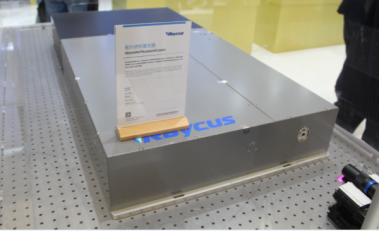
Pulse width <10ps, average power 20W, adjustable repetition frequency range 500k-1000kHz. Mainly used in OLED PI film cutting; covering PI film cutting, 5G antenna LCP cutting; flexible circuit board FPC cutting and drilling. The laser adopts self-developed seed source, solid amplification technology and water cooling. Support Burst mode output, support PSO control.
Conclusion
The development of laser is divided into macro processing and micro processing. In the past years, the cutting and welding of macro processing have a good scale, and there has been no heavy volume in the micromachining of laser. However, there are various reasons for the maturity, cost, process, and application requirements of laser technology. Because of this, micro-machining has always been optimistic. In recent years, the laser industry has shown the development trend of fiber laser, picosecond, femtosecond fiber laser technology and UV laser processing. In the fast-growing world of laser technology applications, high-power continuous lasers for metal cutting are still the mainstay of demand; ultrafast lasers for high-precision machining add new impetus to the manufacturing industry.
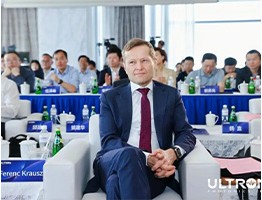 4th Collaboration! What Brought the Global Laser Academic Guru to Chinese Univs & Leading Firms?
4th Collaboration! What Brought the Global Laser Academic Guru to Chinese Univs & Leading Firms?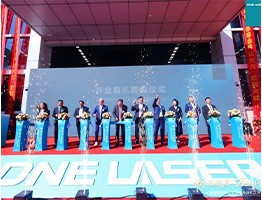 DNE Laser Foshan Smart Manufacturing Base Grand Opening: New Brand Image Starts New Journey
DNE Laser Foshan Smart Manufacturing Base Grand Opening: New Brand Image Starts New Journey Live: DMP GBA Expo – Laser Hard Tech Leads Industrial Smart Manufacturing New Wave
Live: DMP GBA Expo – Laser Hard Tech Leads Industrial Smart Manufacturing New Wave Scientists Develop Palm-sized Short-pulse Laser System: Efficiency Increased to 80%
Scientists Develop Palm-sized Short-pulse Laser System: Efficiency Increased to 80% Global LiDAR Giants Engage in Escalating Patent Wars
Global LiDAR Giants Engage in Escalating Patent Wars
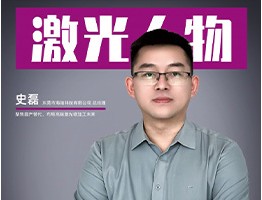 Shi Lei (Hipa Tech): Focus on Domestic Substitution, Future Layout in High-End Laser Micromachining
Shi Lei (Hipa Tech): Focus on Domestic Substitution, Future Layout in High-End Laser Micromachining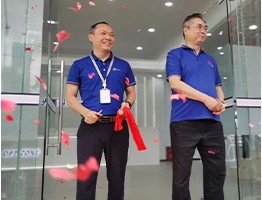 Optizone Technology: 17 Years Devoted to Optics – High-Power Optics Mass-Production Pioneer
Optizone Technology: 17 Years Devoted to Optics – High-Power Optics Mass-Production Pioneer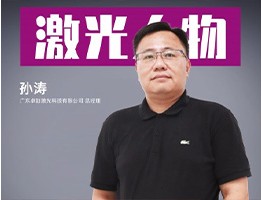 Zhuojie Laser: Breaking barriers via tech breakthroughs, aiming to lead high-end light sources
Zhuojie Laser: Breaking barriers via tech breakthroughs, aiming to lead high-end light sources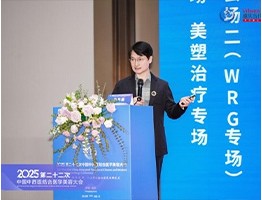 Dr. Sun Linchao: Pioneer and Leader in China's Field of Medical Aesthetic Laser Therapy
Dr. Sun Linchao: Pioneer and Leader in China's Field of Medical Aesthetic Laser Therapy Guo Guangcan, CAS Academician & USTC Professor: Four Decades Chasing Quantum "Light"
more>>
Guo Guangcan, CAS Academician & USTC Professor: Four Decades Chasing Quantum "Light"
more>>
